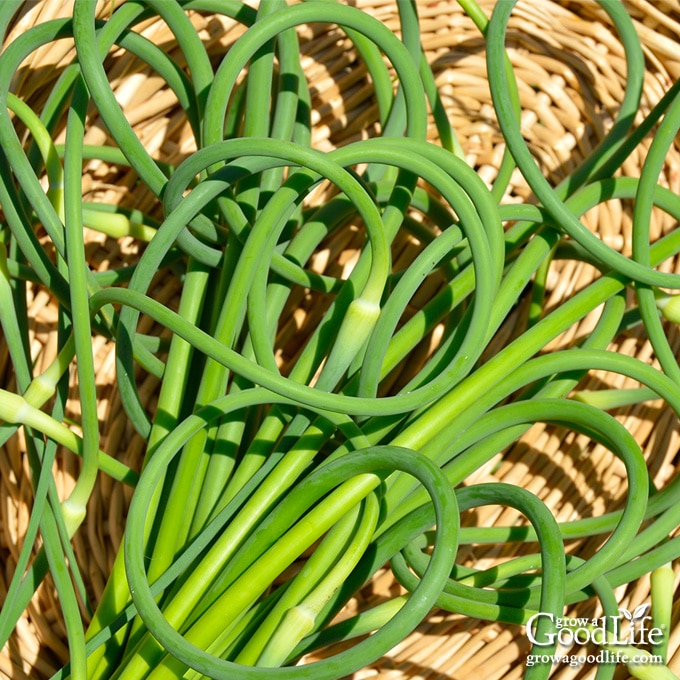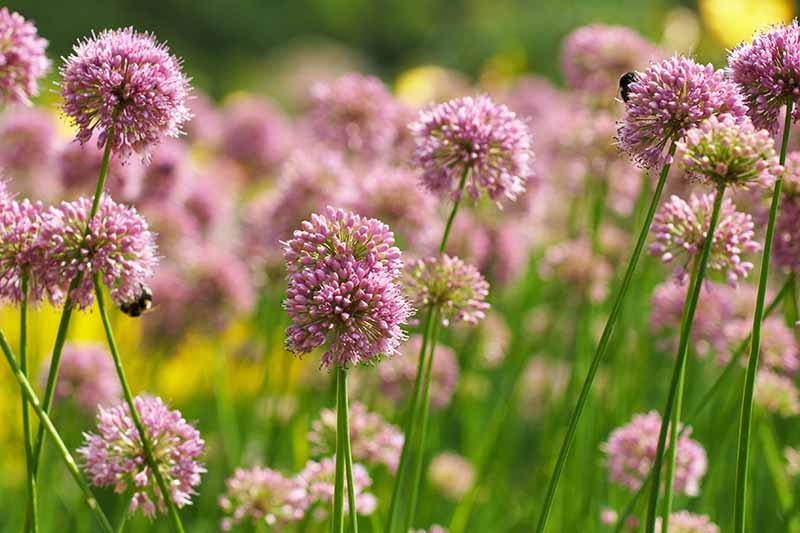In the realm of garlic cultivation, the most challenging aspect lies in determining the optimal time for harvesting the plants. Furthermore, there exist multiple stages in the plant’s life cycle where distinct portions can be harvested. Familiarizing oneself with these growth phases can elevate one’s garlic cultivation prowess and result in a plethora of delectable culinary creations.
The time it takes for garlic bulbs to mature after being planted as a clove varies depending on the type of garlic used. Generally, it takes around nine months for the bulbs to fully mature. However, in areas where softneck varieties thrive, planting in the spring can lead to a harvest as early as three months later. It’s worth noting that the cloves will be much smaller in size if this method is used.
When it comes to the life cycle of garlic, there are 6 different stages – starting with germination and ending with the harvest. It’s good to have an overview of each stage before getting started with your gardening project, as this gives you a better understanding of the plant you’re growing. In this article, we will go over each state of garlic growth.

1. Germination
Did you know garlic isn’t generally grown from seeds like most other plants that require germination? Individual cloves of garlic are much more effective! Using garlic seeds is a possibility, but takes a year longer than propagation from a clove.
Garlic should be planted in fall, not in summer or spring, like most other vegetables, and the first goal is for your garlic to germinate. Germination means a green shoot (also called a sprout) will grow out of your garlic clove. It generally takes 1 to 2 months for garlic plants to germinate as they have to work on their root system first – this is due to the cold season they are planted in.
For successful germination, use healthy cloves – they should be hard and without damage. Soft or spongy garlic cloves will most likely rot in the soil. And to give your sprout optimal growing conditions, ensure that the soil stays moist and loose.
2. Green/Spring Garlic
The appearance of many green shoots shows you have reached stage two of garlic growth. Those green shoots are called green garlic or spring garlic. Spring onion has become a crop of its own, thanks to the popularity it’s gained as a garnish or an individual ingredient in many cuisines.
Young garlic has a crispy texture and is full of flavor. Unfortunately, it doesn’t stay good for long. Harvested green garlic can be stored in a cool place for up to a week, but many choose to eat it fresh right after harvesting.
Green garlic shoots will pear after a few months of growth. At this stage, the young bulbs underground haven’t yet matured.
3. Garlic Scapes
Have you ever noticed those curly stalks with a pointed bud growing out of your garlic plant? Those are scapes, the soft stems of garlic. Scapes appear 3 to 4 weeks before harvesting season and, if left alone, would bloom into flowers.
However, it’s recommended to harvest those shoots before they flower. They require energy and nutrients, taking them away from the garlic bulb. That results in getting smaller garlic heads once it’s time to harvest.

But there is no need to throw scapes away! They are edible and have a taste similar to green garlic. And just like green garlic, garlic scapes should be eaten immediately or within a week.
4. Young bulbs
After 7 to 8 months of growing, premature garlic bulbs can be harvested. While young bulbs aren’t fully developed and as big as mature bulbs, they are still edible. Some people even prefer the taste of premature garlic as it has a unique flavor and is much juicer than mature garlic.
Young garlic bulbs have a fleshy appearance. And they lack the dry papery layers that mature bulbs have.
But unlike mature bulbs, young garlic can’t be stored for long as they rot quickly. Ensure that you consume it within a week of harvest.
5. Mature bulbs
Mature bulbs are the end goal for most when growing garlic. Those bulbs have fully developed and reached their maturity, as their name suggests.
You can tell when the bulbs are mature by the leaves of the plant – the green leaves begin to turn yellow, indicating the garlic is ready to be harvested. You shouldn’t postpone it too long. If left in the ground for much longer, the bulbs lose their protective layer. That results in making them vulnerable to infections and pests.
6. Flowering
If you didn’t harvest the scapes from your garlic plant during stage three, then at this stage they will begin to bloom. Once you see the scapes flowering, your garlic plant has reached the final stage of its life cycle – the flowers are a clear sign that your garlic is fully mature and
can be harvested.

However, there is a reason why some people choose to leave the garlic scapes and don’t harvest the bulbs until the last moment. The blooming flowers are a source of garlic seeds.
Frequently Asked Questions
Can you grow garlic in water?
You can grow garlic cloves that have begun to sprout in water. Put the cloves in water with the sprouts upwards and leave somewhere the cloves get plenty of sunlight.
Can you grow garlic from store-bought?
Yes, you can! Ensure that you use a healthy garlic clove and have some patience. You’ll have a new garlic plant around 9 months after planting the clove.
How to grow big garlic?
To get as big of a garlic plant as possible, don’t harvest the plant before the bulbs are fully mature. That takes around 9 months. Mature garlic bulbs are much larger in size than young bulbs.